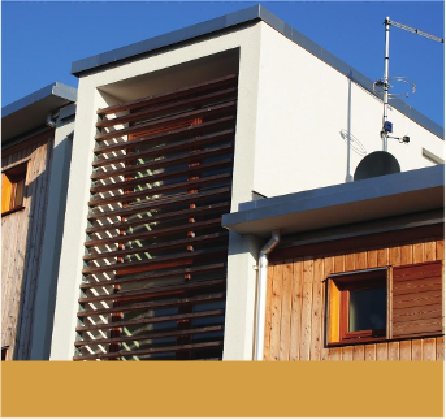Civil Engineering Reference
In-Depth Information
Cladding
The first choice for the external finish on a hempcrete wall is usually a lime render, for
reasons of simplicity and low material cost, but there are times when a different finish is
required. For example, the orientation or exposure of a particular wall may make a simple
lime render insufficient to protect the hempcrete from the prevailing weather, or planning
restrictions may demand that the outside of the building is clad in a certain material to en-
sure it is 'in keeping' with other buildings in the vicinity, for example in a conservation
area.
Timber cladding and render are the two most frequently
used finishes for hempcrete.
Cladding on a hempcrete wall is much the same as that on any other building, and can take
the form of timber boarding, stone or brick masonry, or hung tiles and slates. The cladding
is tied back on to a section of the frame that is flush with or just below the surface of the
hempcrete wall (see
Chapter 13
)
. In the case of masonry cladding this is done with wall
ties, but timber cladding and hung tiles or slates are attached to cladding battens, which are
in turn fixed to the frame.
With many different cladding options available and many different details possible, it is
beyond the scope of this topic to give substantive information on the construction of clad-
ding. The important issues relating to the use of cladding on a hempcrete building as op-

Search WWH ::

Custom Search